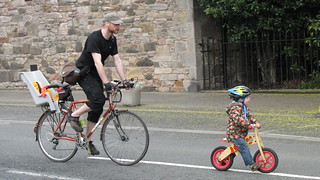Review in the TLS by Saskia Sassen of two books - Robert Kanigel's Eyes on the Street: The life of Jane Jacobs and Vital Little Plans: the short works of Jane Jacobs ed. Samuel Zipp and Nathan Storring:-
“It is the economy of cities that unites Jacobs's work… “It doesn't matter what else cities have,” she argued, “what grand temples they have, what beautiful scenery, wonderful people, or anything else – if their economy doesn't work.” . To understand how radical a proposition this was, we must recall that, at the time, cities were not the type of entity they are today.. Most cities in the 1960s and 70s were poor – New York was bankrupt, and major cities abroad, from Paris to London and Tokyo, were broke. Mass manufacturing and the development of infrastructures took place elsewhere. Especially in the US, the draw was to live in the suburbs...”
Which of course made the private car the prime method of transport and in cities the road engineer ruled in moving these space-stealers about and creating tarmac deserts for them to park.
...When the global economy got going in the 1980s, some cities became strategic assets for major corporations, even as manufacturing cities (for example, Detroit) became poorer. What made some cities rich was that they became.. international intermediaries: when firms go global, they need access to a broad range of highly specialised services, often spread around the world. The big corporations had formerly produced most of these services in-house, but the new global era made this increasingly difficult; a firm that operates in seventy countries needs specialised information regarding the legal, accounting and financial features of each country. There comes a point when it is more efficient to buy in such services rather than expanding one's staff to produce them in-house. This type of demand requires a highly networked concentration of specialised services for corporations and the financial sector: we can think of it as a sort of “silicon valley” deep inside major cities for inventing and developing these types of services.”
I have been thinking that your young employee in the financial district does not want a house in the suburbs with a car, not at least until he/she has a family, and that cycling would be a viable way of transport if the infrastructure was there.
A lot of my youngish colleagues live in the inner-city or inner suburbs and walk and/or take a bus.

 posts
posts
